[Apple II, Avalon Hill]
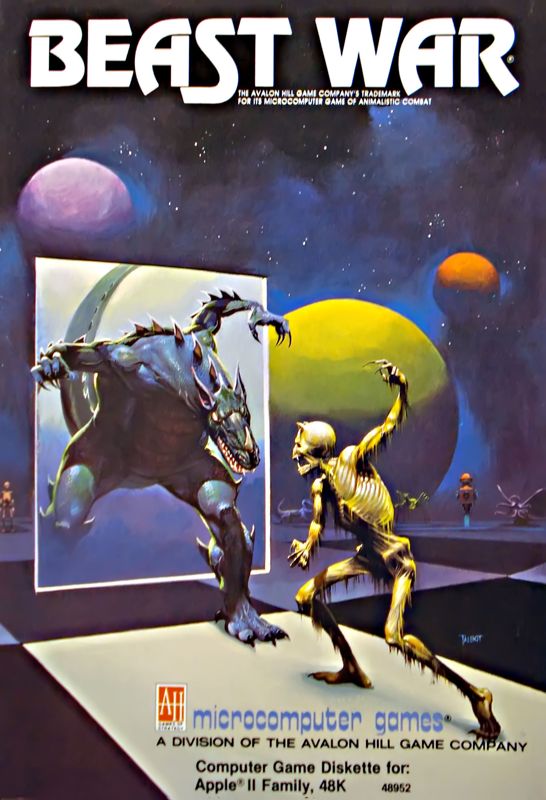
Back in 1983, Jon Freeman famously dubbed Archon “Chess, but fun” – a quip that clearly resonated given the game’s success. This inspired Avalon Hill to take a stab at the “Chess, but” market in 1984 with Combat Chess (“Chess, but with ammo and fuel“), an effort so misguided that, as I write, Combat Chess still isn’t listed on Mobygames. Then in 1985, Avalon Hill shifted gears to the “Archon, but” niche with Beast War. What’s after the “but”? Let’s find out!
Beast War is played on a round chessboard featuring three concentric “orbits” and a central “plexus”, with the titular beasts starting on the outer orbit. The objective is to control more sectors than your opponent (or opponents – the game accommodates up to four players) when play ends, which happens when only one player remains active on the board. Each controlled sector nets 150 points, and every surviving beast is worth 300.
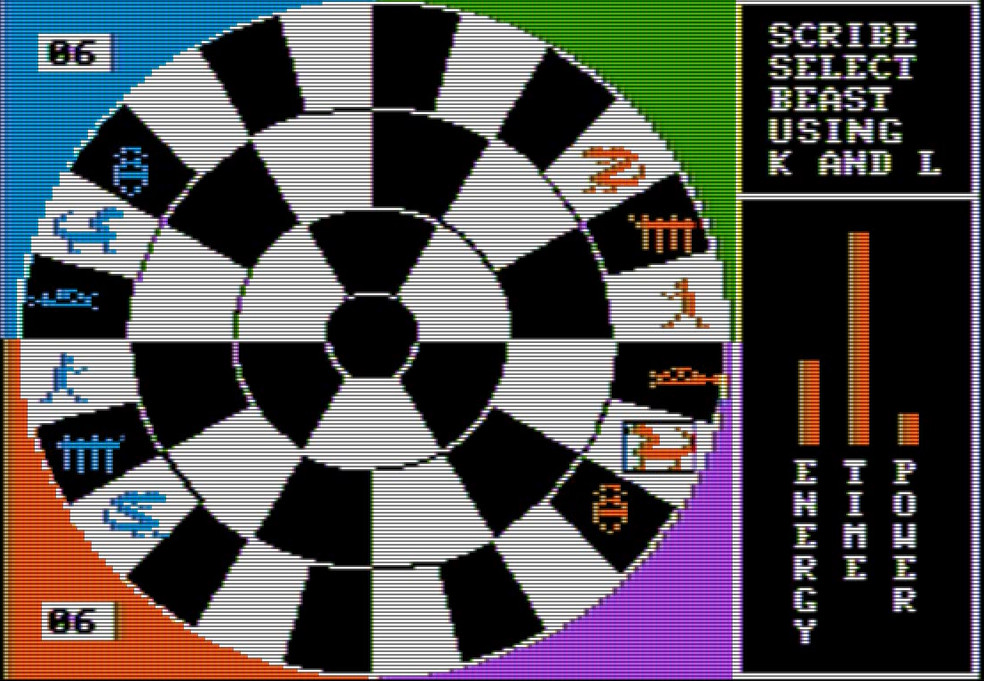
Each of the six beasts moves according to a unique pattern (eg “must remain on its colour” or “must change orbit”) and comes with two stats: energy (HP) and power (damage). Each beast also deals bonus damage to one unit type while underperforming against another but that’s one layer of complexity too many for me as a first approach to the game so I just ignore it and hope it does not impact my game too much.
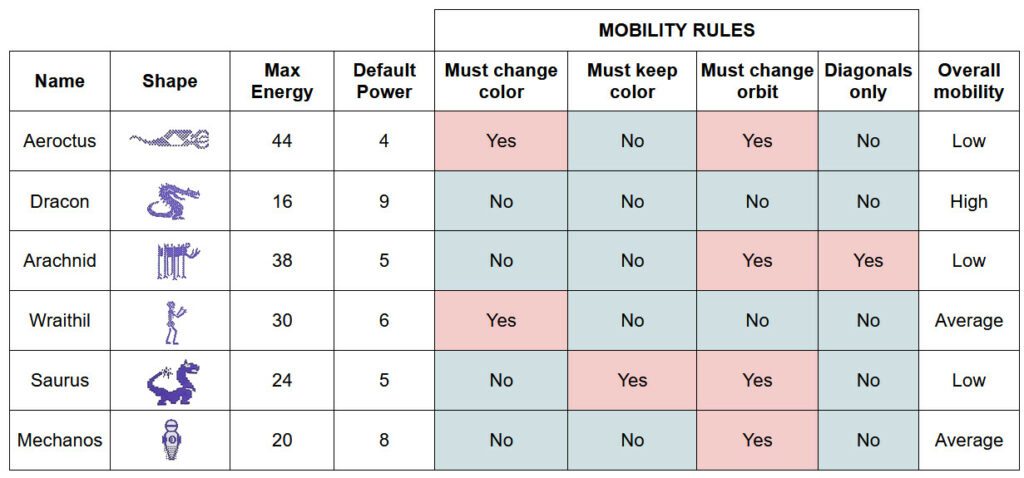
Energy is the most important stat as every move drains it:
- 4 energy for entering a neutral sector,
- 2 energy for moving into a sector you already control,
- 12 energy for moving into an enemy-controlled sector.
There are only two ways to regain energy: by destroying another beast (the victorious unit refills its energy entirely) or by standing on the plexus, which allows instant transit to any sector of the central orbit. Given the plexus’s strategic value, my first move is to race there with my arachnid – a high-energy, low-mobility unit.
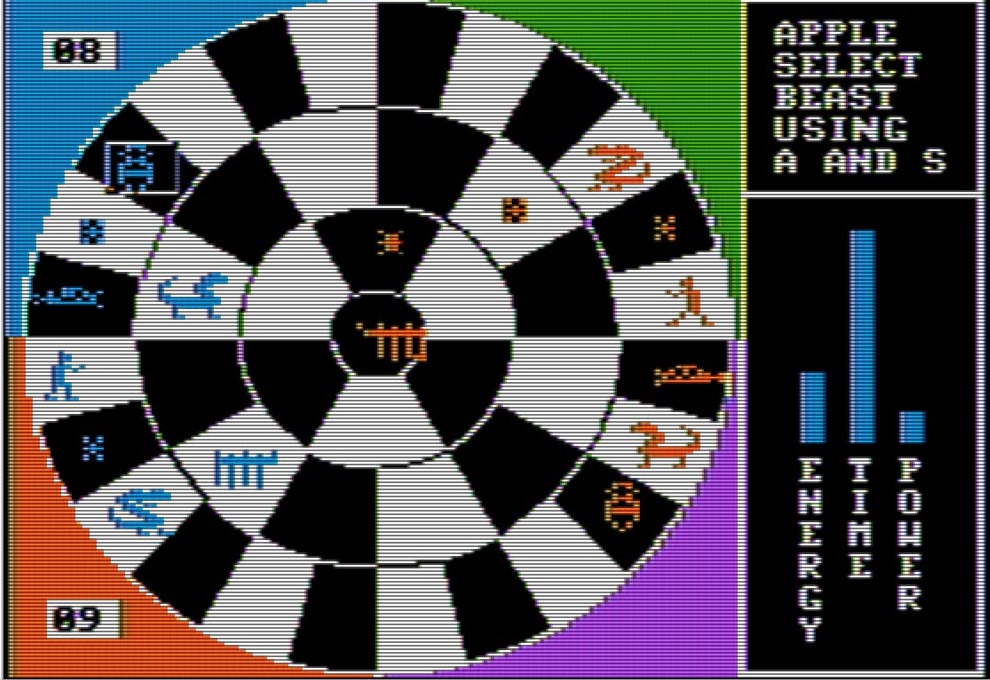
My opponent answers by moving its saurus into the central orbit, next to my arachnid. It is time to prepare for combat and recharge my arachnid’s energy, which is done by – well – waiting, because the designer imagined it would be a good idea to let your energy recharge in real time. At a conversion rate of 1 energy every 3 seconds, I stare blankly at my screen before moving my aeroctus to the central orbit.
As I expected, my opponent then tries to dislodge me from the plexus, triggering the session’s first battle. Combats are fought in a side view reminiscent of Swashbuckler, but drastically streamlined to only 5 buttons: move forward, stop, move backwards, attack and retreat. The only possible tactic is to leverage marginal differences in reach coming from the animations and shapes of the creatures. I don’t plan to let skill be part of the equation this time: the saurus has lost 8 of its 24 starting energy moving to the central orbit so I simply advance until it can’t fall back any further and tear it up.

After the triumph of my arachnid, I reinforce my central control by advancing my aeroctus and wraithil, leveraging adjacency bonuses (+1 power per adjacent unit) to secure my hold.
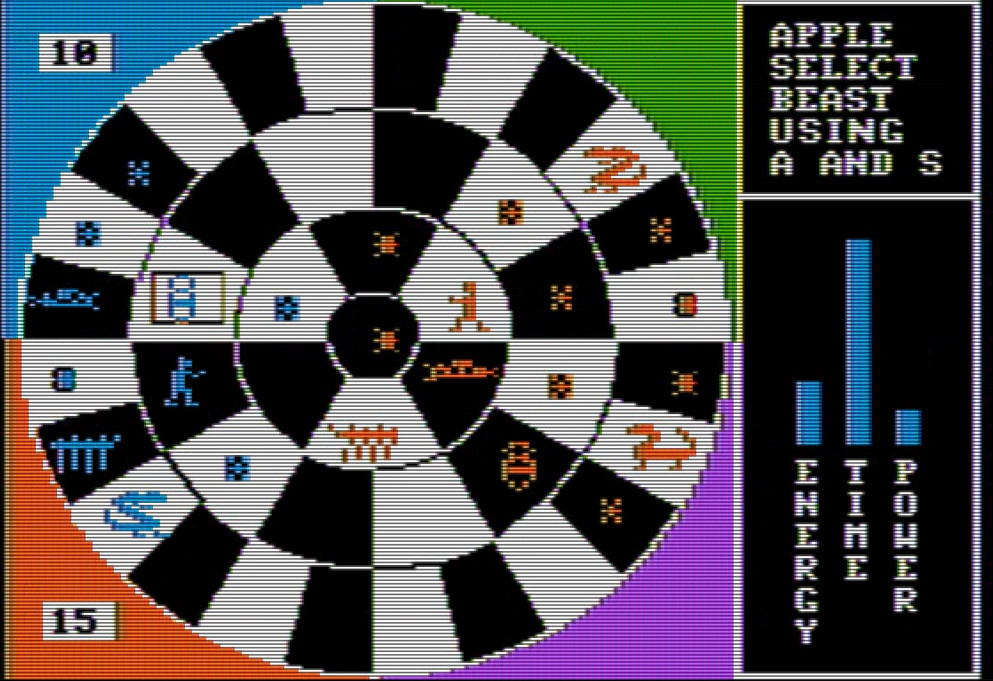
The computer tries to challenge this by advancing a wraithil of its own, but my healthier, bonus-wielding unit counterattacks, forcing my opponent to retreat and thus awarding me a free turn.
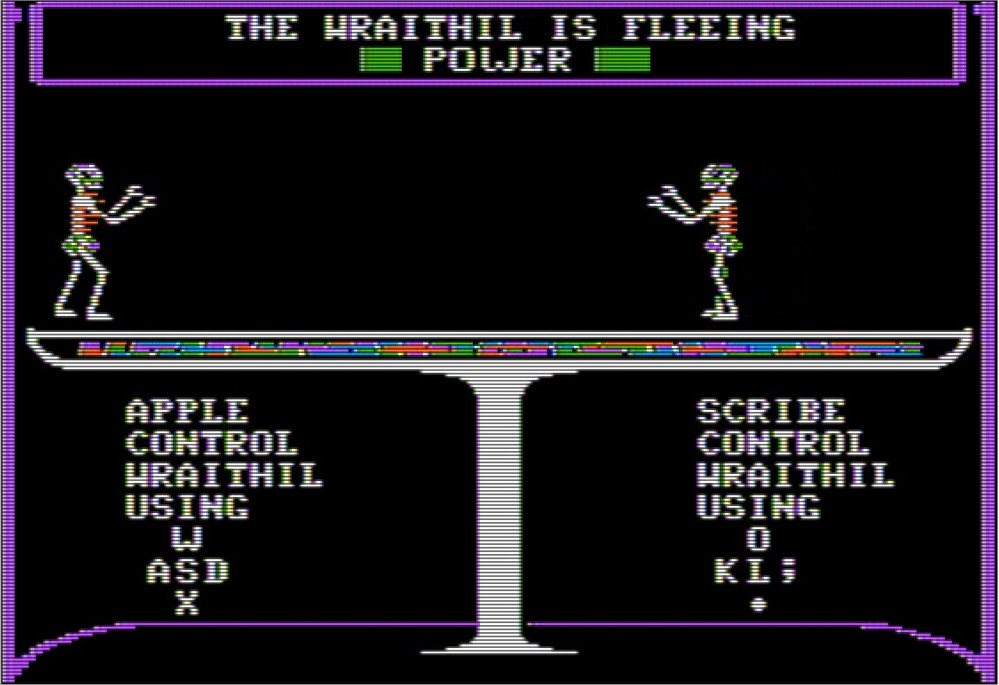
Seizing the opportunity, I bring my mechanos to the frontline for what I believe should be a decisive advantage. However, the computer boldly attacks my arachnid with its own. I had the advantage, but a few seconds of confusion due to using QWERTY controls on an AZERTY keyboard grants my opponent two free attacks – enough for the computer to win the battle and fully refill its energy.
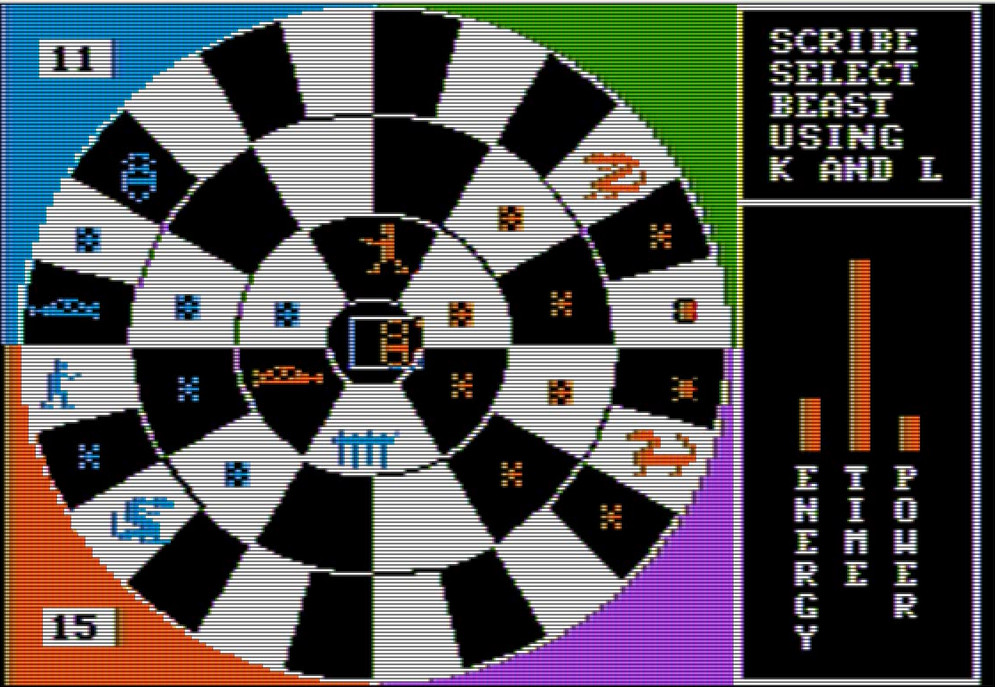
Then things take a turn for the worse: I attempt to weaken the full-health arachnid by removing the dracon supporting it, only to realize mid-battle that dracons have bonus damage against aeroctus – and just like that I lose a second beast!
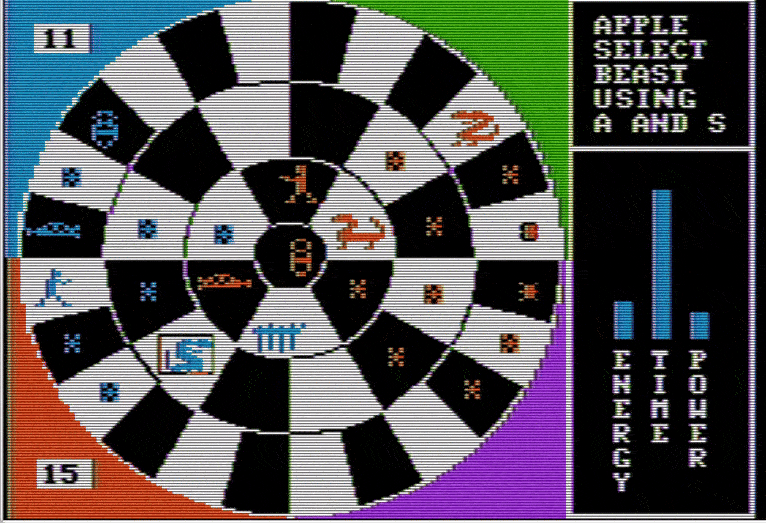
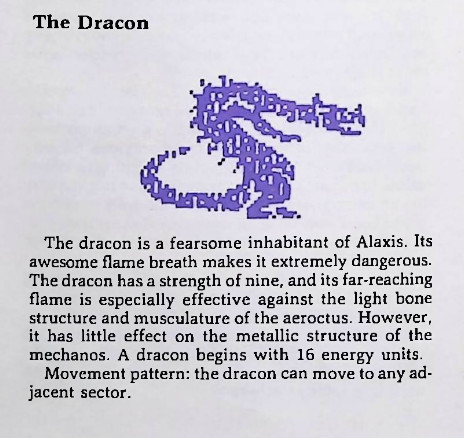
The computer capitalizes on my mistakes, and a couple of turns later its arachnid attacks an unsupported saurus, earning another easy kill because it turns out that arachnids counter sauri.
It is time to deploy my shock beast – the dracon. With only 16 HP, it’s unsuited for conquering new sectors, but it hits like a truck, particularly when it is supported by two other units. Leveraging its superior range, I manage to destroy the arachnid and reconquer the plexus.
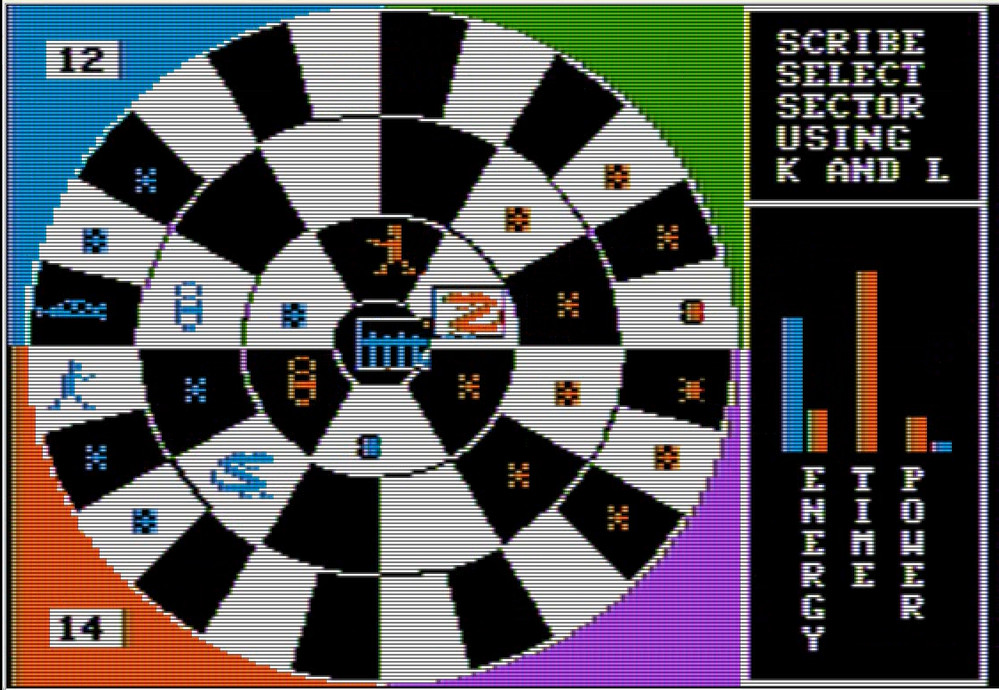
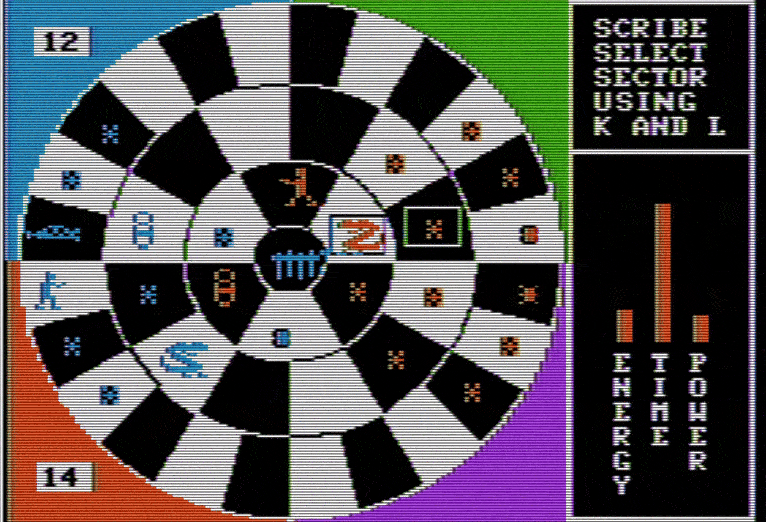
A quick peek at the manual reminds me that mechanos have a bonus against wraithils, so I attack and one-shot my opponent’s wraithil.
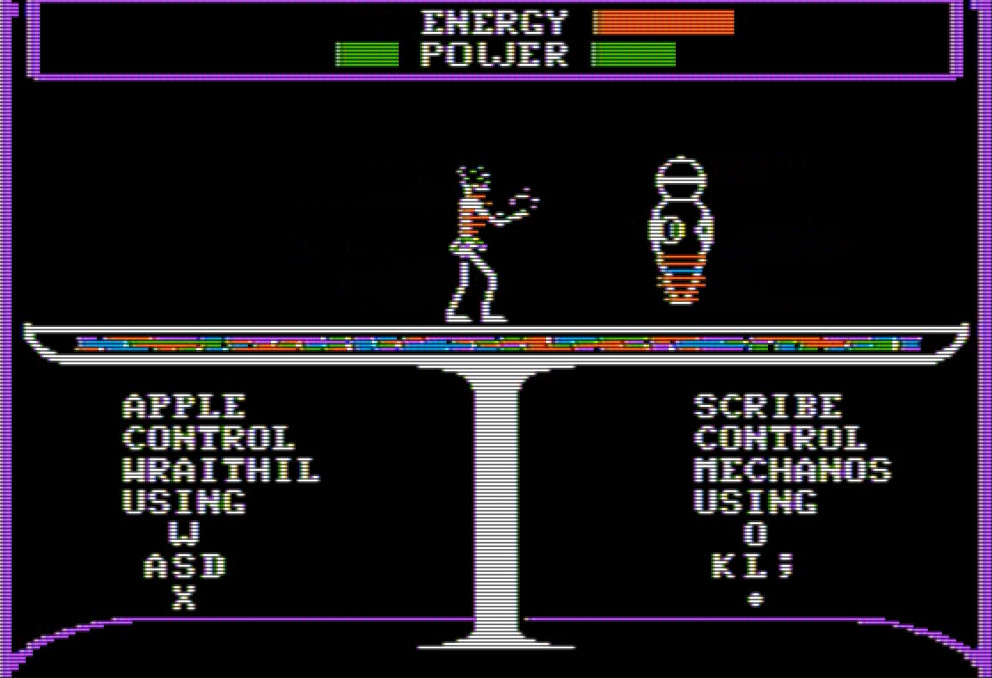
Unfortunately, overconfidence is a quick killer and I lose my mechanos almost immediately after that to an aeroctus. It does not matter any more: I have 18 sectors against 8 for my opponent, so I strive to end the game as quickly as possible.
I use my dracon to capture an enemy sector, then force it into a backward move that drains all its energy and kills it – I should have targeted an enemy sector instead, as that would have given me control of it despite the loss.
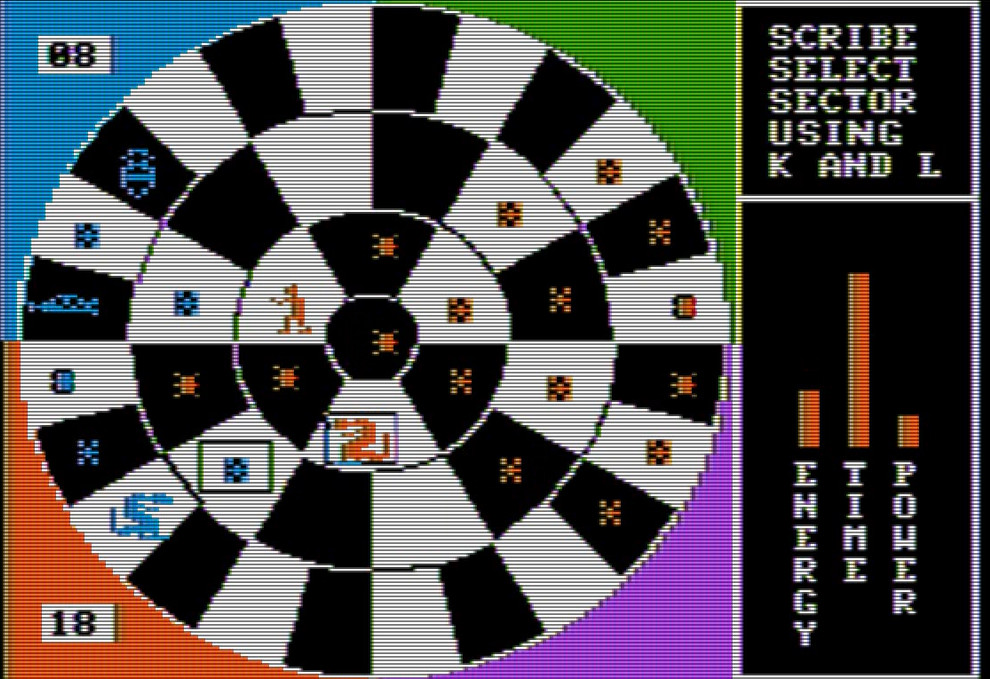
Shortly thereafter, I dash through enemy territory with my remaining wraithil, killing an aeroctus before finally succumbing to a mechanos attack.
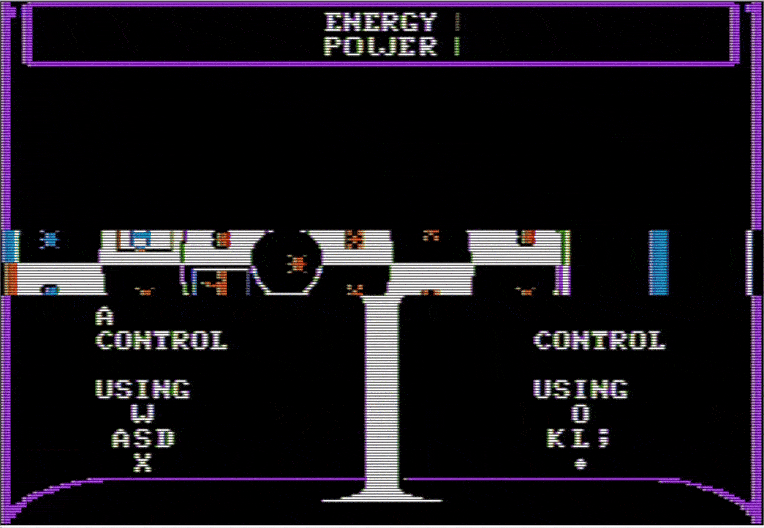
I am out of beasts, which ends the game. With 8 sectors and 2 beasts, the computer earns 1800 points – a far cry from the 2700 points I net for controlling 18 sectors!
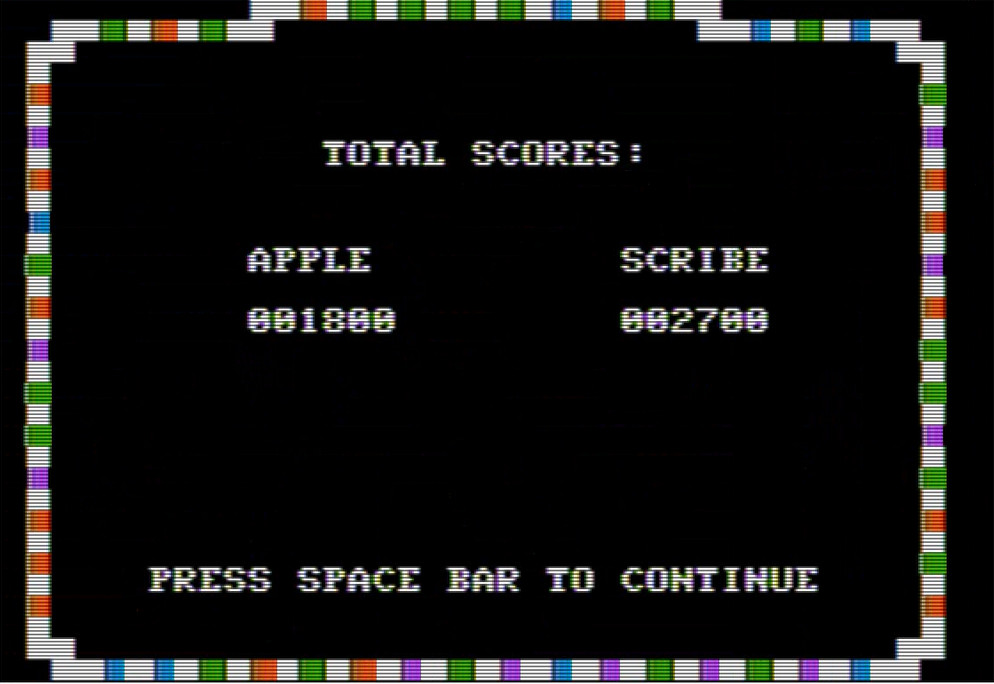
Normally, Beast War is played over several rounds, but for this AAR, I believe I’ve shown enough. Onward to the next section!
Rating & Review
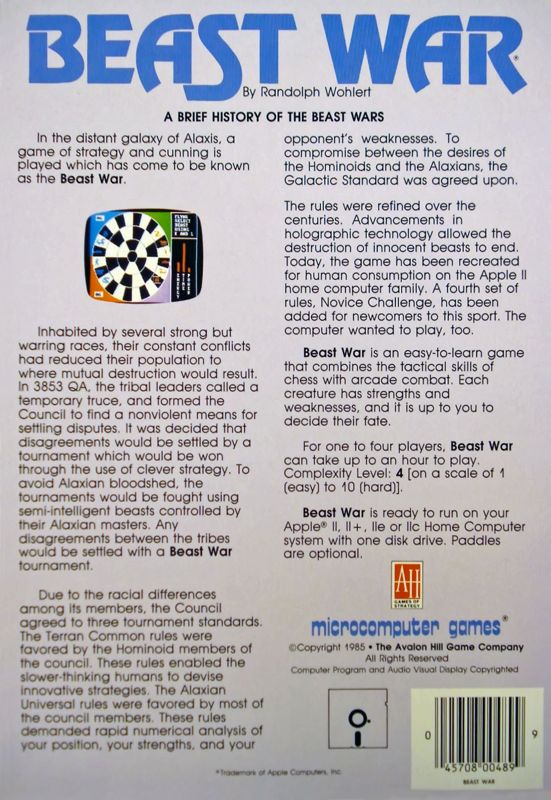
– I am sure people are dying to know more about our backstory!
Beast War by Randolph Wohlert, published by Avalon Hill, USA
First release: Spring 1985 on Apple II
Genre: Action-Arcade
Average duration of a round: 10-15 minutes
Total time played: Around 90 minutes
Complexity: Medium (2/5)
Final Rating: Obsolete
Ranking at the time of review: 102/158
Context – I know I often say “I know nothing about the context surrounding this game” when covering Avalon Hill titles, but Beast War barely exists outside of Avalon Hill and reseller catalogues. No ads, no promotional blurbs—just a single, dry review from Hardcore Computist (“Beast War offers yet another alternative to traditional strategy-oriented boardgames“). We’re lucky that unlike Combat Chess someone found the time to add it on MobyGames, albeit with the wrong date; I initially thought it was a 1984 game but it turns out it is announced for Spring 1985 in Avalon Hill’s 1985 catalogue, and then tagged as released in the 1986 catalogue.
As for its designer, Randolph Wohlert, archive.org has one (1) hit on him: a contribution to a 2002 book (“GPRS demystified“) in which he is described as “involved in the telecommunications business for approximately 25 years, and hold[ing] degrees in biochemistry, education, and computer science.” He also has a handful of patents and research articles on telecommunications to his name, and that’s all I can say about him.
Traits – Beast War is a game with a few genuinely good ideas that the designer did not bring to their logical conclusion. I really like the idea of movement costing energy, with some units having a lot of it and others little of it, but this feature is undermined by the fact that you can refill fully on the central plexus. The plexus was already strategic due to its location and the fact that most units are forced to change orbit when they move, and making it the only source of “peaceful” energy makes the rest of the board irrelevant. Neither the computer nor I cared to occupy the empty sectors that were not on the way to the central orbit in the games I played.
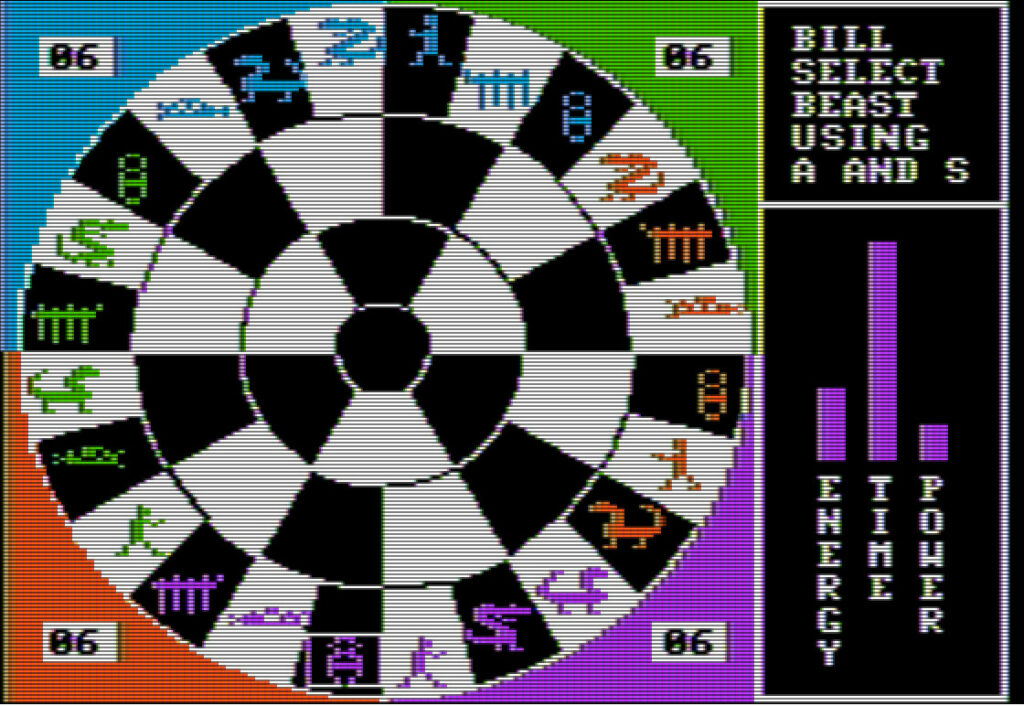
The tantamount importance of the central orbit turns all games into a melee fest, which is unfortunate given how stale the action phase is: it’s slow, it’s unresponsive and plagued by dodgy collisions. Low-skill impact keeps it from becoming a reflex-driven arcade brawler where the strategic layer is irrelevant (Archon’s biggest flaw), but it also often means that battles are decided before the champions start moving. This would still be acceptable if your relative performance in combat still mattered a bit on the final outcome, but no – when you’re outmatched, there is no point in trying to squeeze a few hits when your opponent fully heals at the end of the battle. As for those rare balanced battles, a single misregistered attack can seal your fate. I will admit, however, that the adjacency bonus can sometimes tip the scale – another good idea – but too bad that it is frustrating to build or counter given, again, the complex movement patterns of your beasts.
Speaking of stale, I can’t think of many turn-based games where your optimal move is to stare at the screen doing nothing for 30 seconds. Now imagine doing that in multiplayer. Granted, you can mitigate this by choosing a fast-timer mode where waiting becomes a significant sacrifice, but that’s still one of the strangest design choices I have ever seen on this blog.
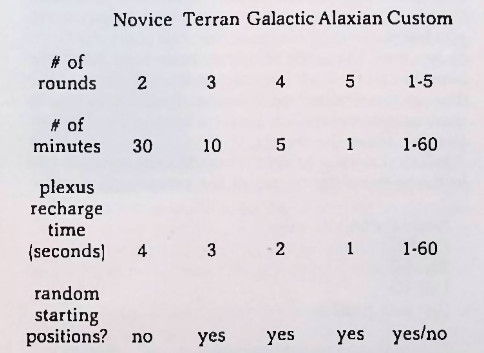
Finally, six beasts simply aren’t enough to justify this many mechanics. Every creature has unique energy, power and movement patterns. Then, there are the hardcoded counters you need to learn by heart. Finally, there are the intrinsic combat capacities due to range, hitboxes and attack animations. The sheer volume of parameters makes the game hard to learn, but not any harder to master. The clutter bogs down the genuinely good ideas.
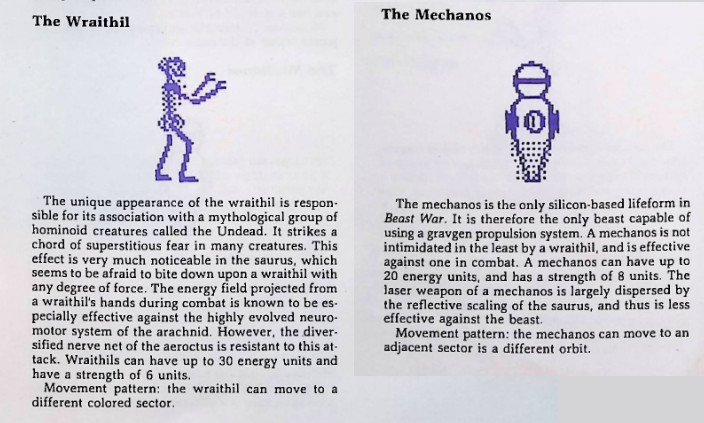
Stripping the beasts down to energy, power and action-phase behavior would likely have made a tighter game where positioning and adjacency-bonus mattered. Also remove the plexus as the sole non-combat source of energy while keeping energy hard to come by, and now you have a game where the whole board is used. Even better: you could even have explained the rules quickly to a friend after beating the AI game after game as I did. Alas.
Did I make interesting decisions? Sometimes, but with so many parameters and a weak AI anyway a large part of my tactics was “let’s do that and see what happens.“
Final rating: Obsolete. Beast War was never going to be a banger, but it is an honest effort and with a little more playtesting-with-friends by designer Wohlert it could have been a cool little game and not “Archon, but the kitchen sink“.
On another topic, I have just been provided with the rules of Ram!, Avalon Hill’s simulator of the Peloponnesian War naval battles. Joy! It includes a campaign mode with individual ship stats! You all know what it means…
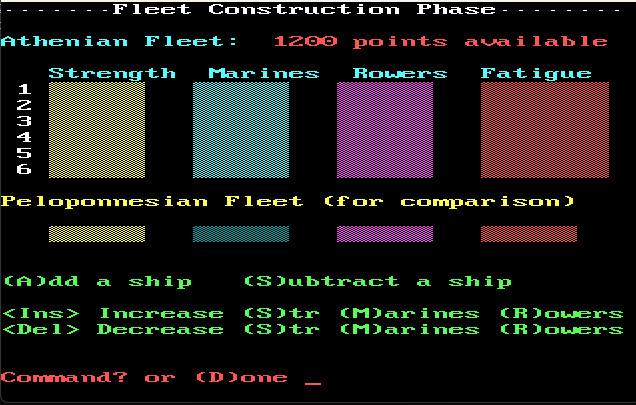
…. I am now looking for Athenians trierarchoi, in the same way as I was looking for pilots in Eagles. The game is an absolute clusterfest so don’t expect to survive, but if you are OK with falling overboard and be dragged to the bottom of the sea by your own cuirass, give me your name. It is going to be non-interactive, I just want to avoid calling my triremes “Trireme #1”, “Trireme #2” and “Trireme #3”. As I am going on holidays next week, the first battle is likely to be after that.
12 Comments
You can count me in as Trireme Rower !
I need some exercise so I’m up for being a rower!
This one… interesting ideas, but the real time waiting as you say is just a bizarre choice. And it just doesn’t work as it stands.
Rower? This is not a position for eupatridai like you and RedSlayer!
The relevant unit is the trireme. Rowers/Marines/Strength are just stats – so you’ll be trierarchoi (captains) in my next battle!
I’m not too keen on playing the Athenians but I will offer my services.
Also, I do find the battle graphics of Beast War…. pretty. There’s something striking me as nice in the attempt to animate properly the monsters in action, child me would have been enthralled (and probably would have not understood the rules, thankfully I didn’t exist in 1985).
I volunteer to become Alexander the Great (at rowing) in your following game.
Shiver me timbers! It looks like you’re got a full set of captains already, oh well, captain Spourgítis will have to wait ashore for a free spot…
Happy to lend my name to one of your ships. Those triremes looked cozy!
Guess your humble captain Ahabides is too late to join the navy.
Interesting that there were this many Archon imitators and none of them (until StarCon anyway) could quite figure out what made it work, including Archon II to some extent. What do you suppose the secret sauce was?
Well, you’re first on the reserve list. So far in tests I am not able to pass the first battle at slowest speed and average difficulty, so it’s likely you’ll be there in the second battle.
I think it’s the first Archon imitator I encounter, second if you count Panzer War. SEUIS belongs to the genre, but predates Archon. I think it is a genre that’s hard to nail down:
– You need to have an interesting strategic phase and a fun “battle phase”. Many games are only arcade or only strategic and they fail at that, but in this genre you need to nail both.
– Both phases need to be balanced in terms of impact on the game (eg you can’t have a game where you can be so good at either phase than the other one does not count): skill matters, but does not matter too much
– The game needs to be accessible, else you’re not going to convert new players (=get your friends to play). This means, for instance, having a limited number of parameters to work with, and the “counter” system, if any, to be intuitive/gameplay based (one of the big failure of Beast War).
I think the “secret sauce”, if any, is that you don’t need to be complex – you need the two parts to respond to each other, and by this I mean in particular “the strategic phase has an impact on the battle phase”. Archon did it wellwith the light/dark cycle, more so tahn Archon II which only had static “elemental planes”. BEAST War did it well but failed on other items, Panzer War and SEUIS did not do it. And then Star Control II arrived and nailed it with the way ships countered one another and “health” that was difficult to recover if you did not have colony, colony that were themselves vulnerables to Syreen etc.
Archon also had the benefit of being first and thus having the best mechanics to pick from, whereas everyone else had to differentiate themselves from Archon. Even though a chess board isn’t copyrighted, it’s going to draw negative comparisons to your game if you use it. (at least then, now nobody’s going to care) Other classic board games won’t work quite as well modified like a chess board, and so you’re already down quite a bit from the king of the mountain before you’ve even started.
(oh, and put me down for one of the Greeks who are inevitably going to get pulled down into the sea)
I’m more of a Long boat commander than a Trireme captain, but I could help if you have any catapults at the harbor. Unless it is possible to outfit a Trireme with a catapult?
I’m late to the sea party, but you can jot down the Chalypinel as the ship name on the reserve list. While it might be a little anachronic (being derived from the word “steel”), it’s still better then my go-to ship name, which is The Flying Dutchman. 😉